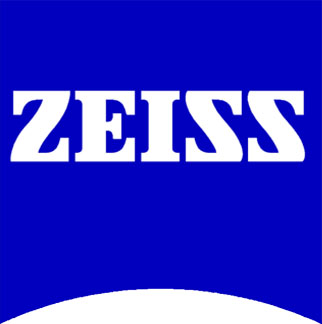News › ZEISS • revolutionizes quantitative petrography
 ZEISS introduces unique digitization system for virtual microscopy, collaboration and machine learning data analytics
ZEISS introduces unique digitization system for virtual microscopy, collaboration and machine learning data analytics
ZEISS is introducing a new ground breaking solution for petrographic analysis. ZEISS Axioscan 7 expands the possibilities of automated petrography by combining unique motorized polarization acquisition modes with unprecedented speed and a rich software ecosystem for visualization, analysis, and collaboration.
Fully automated acquisition now comes with unprecedented speed across even the largest sample collections. Coupled with trusted ZEISS optical quality this ensures consistent and reproducible imaging and analysis. The ZEISS ZEN Pol Viewer allows for complex multichannel polarization data to be visualized and interrogated in an intuitive environment as a virtual petrographic microscope. Data can be stored locally or automatically uploaded to the cloud for online visualization, distribution and collaboration, allowing researchers to share their images online and organize entire projects on the go.
Polarization images with unprecedented flexibility
Speed, efficiency, and multichannel viewing are critical when it comes to petrographic dataset analysis. ZEISS Axioscan 7 employs swift and reproducible LED illumination and a sophisticated filter concept to efficiently separate a broad range of channels, using the new motorized stage and image acquisition system. Aperture settings are automatically adjusted and optimized to the numerical aperture of the selected objective.
Visualize complex digitized petrographic data
Geological teaching and research require specialized visualization solutions and global collaboration. Remote access to fully digitized thin section collections augments traditional teaching approaches through blended learning, allowing for a flexible approach to tackling complex ideas.
ZEISS Axioscan 7, the innovative digitization platform, goes beyond collecting multiple polarization modes – brightfield, plane polarization, cross polarization, or circular polarization. It automatically simulates stage rotation such that the sample appears exactly as it would in a traditional petrographic light microscope, even whilst observing multiple image types. This facilitates the learning process in a teaching environment in the lab and online and creates a unique and immersive petrographic experience.
axioscan-7_condenser_2.jpg © ZEISS
ZEISS Axioscan 7 employs swift and reproducible LED illumination and a sophisticated filter concept.
Automated quantitative petrography
Multimodal acquisition and digitization allow for fully automated quantification and analysis of complex optical mineralogy data. Machine learning and advanced image analysis can be used to classify mineralogy and porosity, as well as identify individual mineral grains directly from the unique rotating cross polarized data. Birefringence analysis allows for fabrics and anisotropy to be quantified using mineral-by-mineral identification of extinction orientation, and subsequent grain identification used for grain size, shape and orientation analysis. The extremely reproducible nature of ZEISS Axioscan 7 data allow for large batch analysis to be interrogated and reports generated with only minimal user interaction.
A sound investment
The demand for higher throughput and screening capability drives the need for automated instruments. ZEISS Axioscan 7 provides automation without sacrificing flexibility or the high quality of images needed to attract a very wide range of users to core imaging facilities. With approaches as varied as visualization for students to advanced analytics in industry, the new slide scanner attracts users from the full range of geoscience workflows. The powerful combination of accommodating a broad user base with robust design places ZEISS Axioscan 7 as a top performer when it comes to utilization & productivity, and a rapid return on investment.
About ZEISS
ZEISS is an internationally leading technology enterprise operating in the fields of optics and optoelectronics. In the previous fiscal year, the ZEISS Group generated annual revenue totaling 6.3 billion euros in its four segments Semiconductor Manufacturing Technology, Industrial Quality & Research, Medical Technology and Consumer Markets (status: 30 September 2020).
For its customers, ZEISS develops, produces and distributes highly innovative solutions for industrial metrology and quality assurance, microscopy solutions for the life sciences and materials research, and medical technology solutions for diagnostics and treatment in ophthalmology and microsurgery. The name ZEISS is also synonymous with the world’s leading lithography optics, which are used by the chip industry to manufacture semiconductor components. There is global demand for trendsetting ZEISS brand products such as eyeglass lenses, camera lenses and binoculars.
With a portfolio aligned with future growth areas like digitalization, healthcare and Smart Production and a strong brand, ZEISS is shaping the future of technology and constantly advancing the world of optics and related fields with its solutions. The company’s significant, sustainable investments in research and development lay the foundation for the success and continued expansion of ZEISS‹ technology and market leadership. ZEISS invests 13 percent of its revenue in research and development – this high level of expenditure has a long tradition at ZEISS and is also an investment in the future.
With over 32,000 employees, ZEISS is active globally in almost 50 countries with around 30 production sites, 60 sales and service companies and 27 research and development facilities. Founded in 1846 in Jena, the company is headquartered in Oberkochen, Germany. The Carl Zeiss Foundation, one of the largest foundations in Germany committed to the promotion of science, is the sole owner of the holding company, Carl Zeiss AG.
Further information at www.zeiss.com
ZEISS Research Microscopy Solutions
ZEISS Research Microscopy Solutions is the world’s only one-stop manufacturer of light, electron, X‑ray and ion microscope systems and offers solutions for correlative microscopy. The portfolio comprises of products and services for life sciences, materials and industrial research, as well as education and clinical practice. The unit is headquartered in Jena. Additional production and development sites are located in Oberkochen and Munich, as well as in Cambourne (UK) and Pleasanton (USA). ZEISS Research Microscopy Solutions is part of the Industrial Quality & Research segment.
Press Contact
Vybhav Sinha
ZEISS Research Microscopy Solutions
+49 3641 64–3949
moc.ssiez@ahnis.vahbyv
